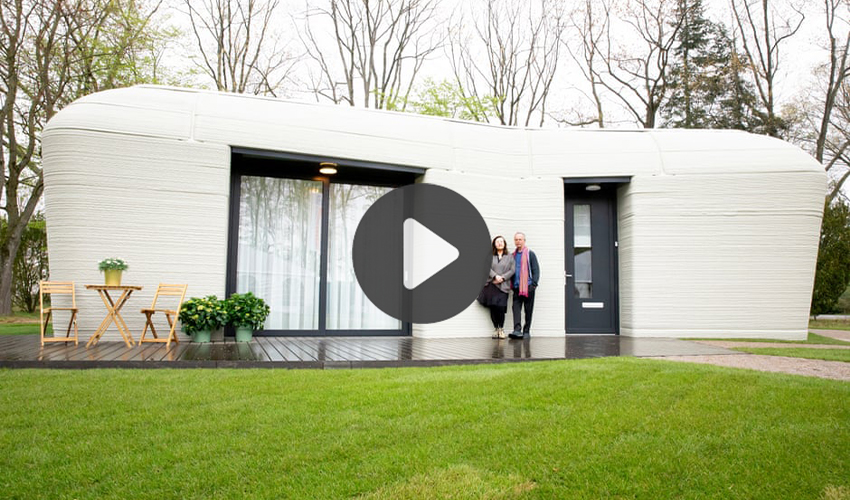This week, discover the first 3D printed house in the Netherlands. Measuring 94 square meters, two tenants recently moved into it. Still on the same topic, we will explain to you why additive manufacturing could well be the future of the construction sector, in particular thanks to its lower costs and its low ecological footprint. Finally, Florian De Boeck and Louis-Philippe Broze, the two co-founders of Spentys, will present their company which 3D prints custom-made orthotics. In any case, we wish you a very happy Sunday!
TOP 1 : The first 3D printed house in the Netherlands: In the Netherlands, in the Bosrijk district of Eindhoven, the first of the five “Project Milestone” houses was 3D printed. No less than 24 elements were required to be printed in concrete to obtain this 94 square meter habitat. With two bedrooms, the 3D printed house welcomed its first tenants earlier this month: Elize Lutz and Harrie Dekkers. And if this first house has only one floor, future 3D printed homes should have several. While waiting for the next ones, this first 3D printed building in the Netherlands demonstrates that additive manufacturing is becoming more and more popular in the construction sector:
TOP 2 : Additive manufacturing and the future of construction: ICON and Mighty Building are two companies specializing in the building and additive manufacturing sector. On several occasions, the two companies have demonstrated that 3D printing is an efficient way to construct buildings. Thanks to 3D technologies, they offer constructions without waste and at low costs. And as the number of people looking for habitat increases, additive manufacturing could prove to be the answer, as was the case in Austin, where houses for the homeless were 3D printed:
TOP 3 : Spentys and custom-made orthotics printing: In this video proposed by Fédérale Assurance, Florian De Boeck and Louis-Philippe Broze present Spentys, the company they co-founded. Without any medical background, the two Belgian friends launched their startup in 2017, and decided to specialize in the development of custom 3D printed orthoses. In this type of application, additive manufacturing makes it possible to provide patients with personalized and more efficient care, all in record time:
TOP 4 : 3D technologies at the service of aviation: In order to repair its planes and produce new parts, the US military uses 3D technologies. Aviation mechanic Joshua Orr uses 3D scanner CreaForm HandyScan 700 to obtain 3D models of parts with problems or simply broken. Then, thanks to two 3D printers, one for metals and the other for polymers, he 3D prints the new parts. In this way, he can repair planes in a minimum of time:
TOP 5 : The partnership between Multiplus and Formlabs: Multiplus is a Chinese service provider covering the entire production cycle of plastic products. To meet the needs of some of its customers, the company turned to Formlabs and 3D printing. In order to reduce production times for small series parts, Multilus used 3D printed injection molds. Thanks to additive manufacturing, lead times have been reduced from four weeks to just 3 days:
What do you think of the first 3D printed house in the Netherlands? Do not hesitate to share your opinion in the comments of the article or with the members of the forum 3Dnatives. Find all our videos on our channel YouTube or follow us on Facebook or Twitter !
–

